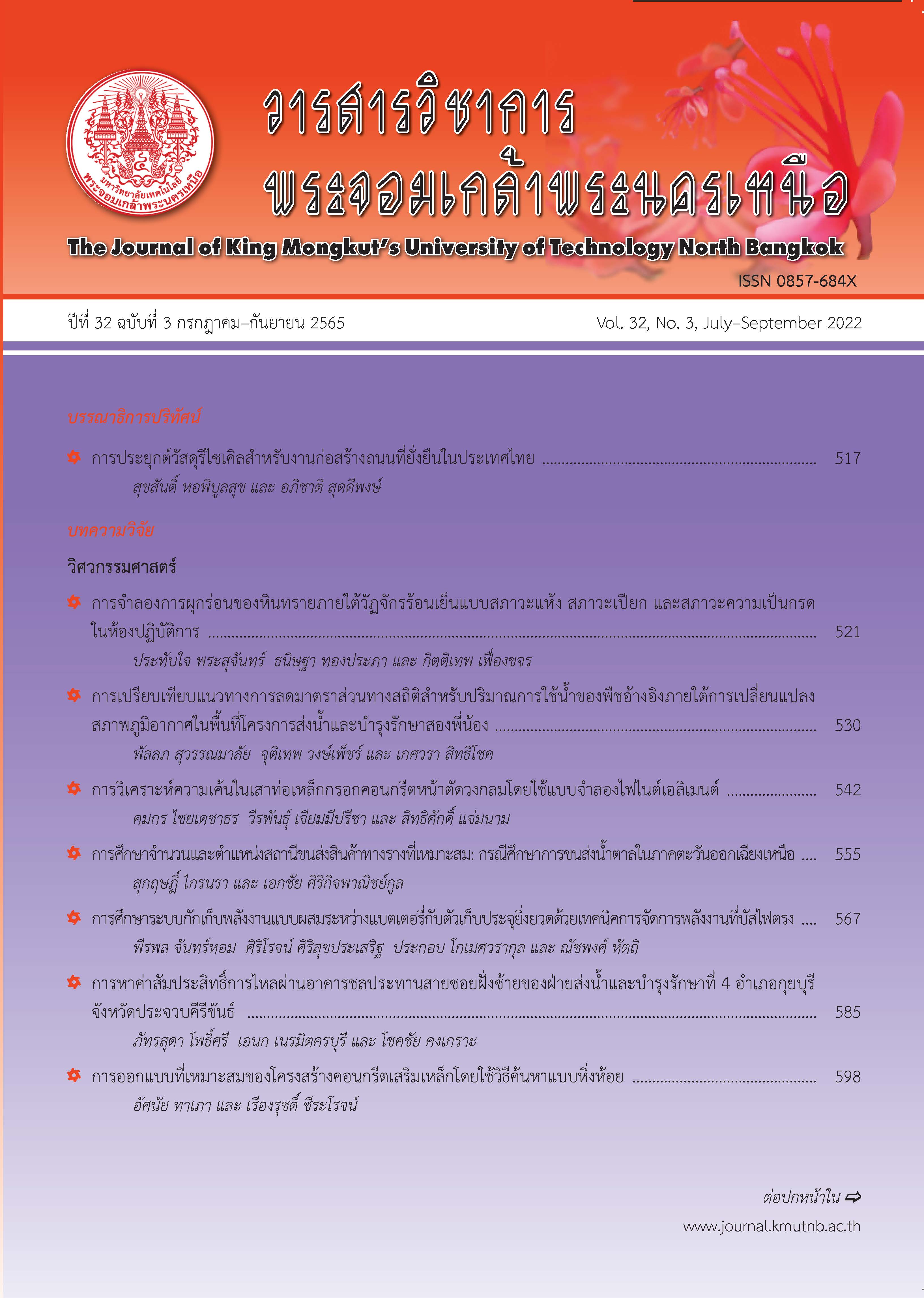A comparison of missing Value Estimation Methods for Response Surface Design
Main Article Content
Abstract
The objective of this research is to compare efficiency of missing value estimation methods in response surface designs. The missing value estimation methods considered in the research are the four imputation methods: Mean Imputation (MI), Regression Imputation (RI), Stochastic Regression Imputation (SRI) and K-nearest Neighbor imputation (KNN). The four response surface designs in a spherical region with 3 and 4 design variables (k = 3, 4): Central Composite Design (CCD), Small Composite Design (SCD), Box-behnken Design (BBD) and Hybrid design are used in this study. The variance of errors are 0.5, 1 and 1.5. The criteria for comparing the efficiency are Mean Square Error (MSE) and Mean Absolute Error (MAE). The results show that the RI method performs the best in the large design sizes (N = 26, 27). The RI and MI methods mostly performs well in the medium design sizes (16 ≤ N ≤19). The MI and KNN methods mostly perform well in the small design sizes (12≤ N ≤14). The efficiency of all imputation methods increases when center points (nc) increases and the variance of error decreases.
Article Details

This work is licensed under a Creative Commons Attribution-NonCommercial-NoDerivatives 4.0 International License.
The articles published are the opinion of the author only. The author is responsible for any legal consequences. That may arise from that article.
References
R. H. Myers, D. C. Montgomery, and C. M. Anderson-Cook, Response Surface Methodology : Process and Product Optimization Using Designed Experiments, 3rd ed. New York, 2009.
H. O. Hartley, “Smallest composite design for quadratic response surfaces,” Biometrics, vol. 15, no. 4, pp. 159–171, 1959.
B. Chomtee, “Comparison of design optimality criteria of reduced models for response surface designs in a spherical design region,” Ph.D. dissertation, Montana State University, 2003.
W. Pardubsri, “A Comparison study of spherical response surface designs for a set of reduced models by graphing methods,” M.S. thesis, Department of Statistics, Faculty of Sciences Kasetsart University, 2015 (in Thai).
B. W. Bolch and C. J. Huang, Multivariate Statistical Method for Business and Economics, Prentice-Hall Inc., Englewood Cliffs, NJ, 1974, pp. 329.
R. J. A. Little and B. D. Rubin, Statistical Analysis with Missing Data, John Wiley & Sons, Inc., New York, 2nd ed. 2002, pp. 60–61.
R. Lumjaisue,“Comparison of missing data estimation methods for the multiple regression analysis with missing at random dependent variable,” Thammasat International Journal of Science and Technology, vol. 25, no. 5, pp. 676–777, 2017 (in Thai).
W. Chaimongkol, “Three composite imputation methods for item nonresponse estimation in sample surveys,” Ph.D. dissertation, Department of Applied Statistics, National Institute of Development Administration, Bangkok, 2005 (in Thai).
P. Jonsson and C. Wohlin, “An evaluation of k-nearest neighbor imputation using likert data,” in Proceedings of the 10th International Symposium on Solfware Metrics, 2004, pp. 1530–1435.
A. Wongarmart, “Comparison of the estimation methods for nonignorable missing data in multiple linear regression,” M.S. thesis, Department of Statistics, Faculty of commerce and accountancy Chulalongkorn University, Bangkok, 2012 (in Thai).
Y. Yakubu, A. U. Chukwu, B. T. Adebayo, and A. G. Nwanzo, “Effects of missing observations on predictive capability of central composite designs,” International Journal on Computational Science & Applications, vol. 4, no. 6, pp. 1–18, 2014.

